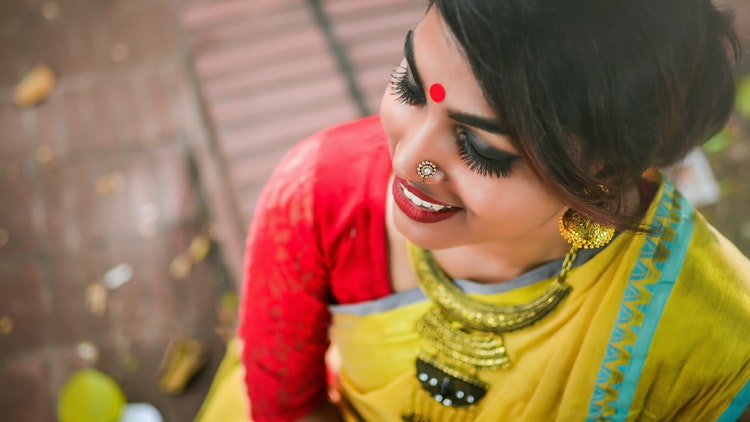What exactly is “smart casual”? There is such a great deal of ambiguity in one’s understanding of this term that an everyday dresser without a penchant for sartorial excesses simply understands it as “not too formal, not too casual”. Particularly in the Indian context one has to presume that perhaps a nice kurti without too much zari but without looking like a cub reporter either, should ideally make the cut. Blazer but not suit, full sleeve shirt but sleeveless tea dress, kurtas and perhaps the odd sari—there is wide room for this smart casual segment. Or like we’ve come to understand in India, dress like you have guests visiting for dinner but not like you have relatives coming over for Raksha Bandhan. Each of us makes up our own rules for what falls into these 50 shades and fabrics of smart casual. Broadly speaking, we agree that beachwear and wedding wear don’t fit into this at all. Rest should be okay as long as it isn’t too OTT, correct? Turns out, even in this day and age, the saree isn’t the All Access Pass it ought to be in India. If six yards of fabric don’t have you covered, wonder what will? If the recent fracas at Delhi’s Aquila restaurant is anything to go by, then the saree is not a smart choice. “Ma’am, we allow only smart casuals, and saree does not come under smart casuals” says a lady staff member rather damningly, as Anita Choudaary urges her to show where in the rulebook is a saree the reason to decline entry into the restaurant. We don’t get to see Anita’s saree, but going by her Facebook profile, this Doordarshan National creative director would presumably be wearing—what one can surmise—a decent saree. After all, if it was vulgar in any way, there would’ve been enough videos to call Anita cheap things…as is the norm on social media. Reviewing the restaurant’s statement that distances them from the gate manager’s statement while insisting that Anita’s video is misrepresenting what truly happened, one cannot help but wonder what made the lady staff member stand her ground so firmly. Clearly there’s been some diktat that defines smart casual for her because she so confidently declares it by rote. Sure, we have no idea what entirely transpired that evening and we’ve a 20-odd second snapshot of smart casual nonsense from Anita to demonstrate support in her favour. Even if we were to give the restaurant the benefit of the doubt, one cannot dismiss what’s finally gone on record in the video. Even Aquila has had to concede on that point, albeit sickeningly distancing themselves from their gate manager. Sacking the messenger would be tokenism to show that action has been taken; but the problem remains because it is so endemic in our pursuit for poshness and modernity. If it’s posh, it must be foreign maal or branded. Indians have to blame themselves for this constant need to seek approval from an outsider. Like yoga has been all around us but when the West labelled India as a wellness and spirituality destination, we sat up and took notice. Something about the home-grown chicken being akin to a bowl of lentil soup. Exactly. Ghar ki murgi, daal barabar. But that doesn’t sound so posh, innit? Sadly, such instances aren’t new to us, though one would imagine they’d be a thing of the past over 70 years since the Raj left India. Often tony gymkhanas and self-entitled restaurants and clubs take it upon themselves to remind us of our colonial past. Aquila may not have it down as a written rule, but it needs to sensitise its staff to respond carefully to the cultural heritage of its primary clientele: Indians. The world itself has woken up to welcome Indians in their national clothes in public spaces—formal, casual and smart casual. A salwar kameez is nothing but a long (or short), fitted tunic with matching or contrasting trousers, and the look may or may not be completed with a complementing stole. I mean, on technical grounds alone the outfit is smart casual. So, what has the saree done wrong? Is it too smart for smart casual or too casual for smart casual? The fabric material, embroidery, type of blouse and jewellery are all variables in these shifting parameters of smart casual dressing. What’s a bigger offense, then? Being over-dressed or being under-dressed? Because I struggle to understand why a saree won’t meet the dubious criteria of being smart and being casual at the same time. I figured just being neat should be sufficient, but dressing is such a subjective experience that were I a beautiful chiffon saree, I couldn’t decide what’s more insulting: Am I not smart enough? Or perhaps, not casual enough? Rajmata Gayatri Devi would be turning in her grave at just the thought of it. If a saree works on a red carpet and to meet the Queen of England, and kurtis or cotton sarees work for PTA meetings and coffee with friends, then surely somewhere between your Kanjeevaram saree and your Lucknawi kurti falls the vast array of smart casualness. Somebody needs to send Aquila that memo immediately.
Aquila may not have it down as a written rule, but it needs to sensitise its staff to respond carefully to the cultural heritage of its primary clientele: Indians.
Advertisement
End of Article


)
)
)
)
)
)
)
)
)



